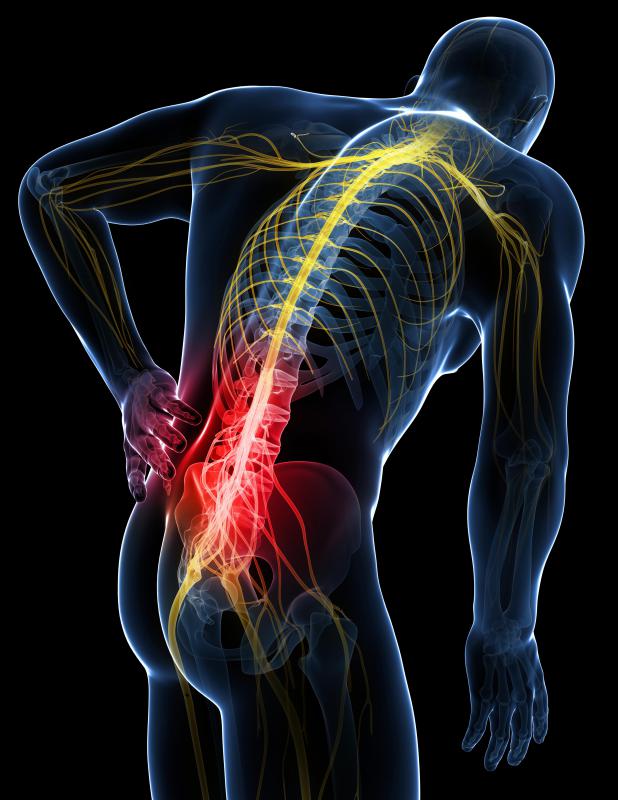At WiseGEEK, we're committed to delivering accurate, trustworthy information. Our expert-authored content is rigorously fact-checked and sourced from credible authorities. Discover how we uphold the highest standards in providing you with reliable knowledge.
What is the Acetabular Labrum?
The acetabular labrum is a cartilaginous ring encircling the opening of the acetabulum, the socket-like cavity in the pelvis into which the head of the femur bone inserts to form the acetabulofemoral or hip joint. Also known as the glenoid labrum of the hip joint, it the ligament that holds these two bony surfaces together. Like any ligament, it is made up of dense, fibrous tissue strong enough to prevent the bones it connects from separating. The acetabular labrum, however, serves an additional purpose: it adds depth to the hip socket, which helps prevent a subluxation, or dislocation, of the thigh bone from the pelvis.
A cup-shaped cavity, the acetabulum is formed by the junction of all three bones in the pelvis: the ilium, ischium, and pubis. The ilium is the butterfly-wing-shaped bone of the pelvis. Its lower border forms the upper surface of the hip socket. Below the ilium is the ischium, the curved bone of the lower outer pelvis. Its topmost border forms the bottom rear surface of the acetabulum. Next to the ischium is the pubis, another curved bone of the lower pelvis whose upper outside border forms the bottom front surface of the hip socket.

These three adjacent pelvic bones curve together to form one continuous bony surface on either side of the pelvis. Each cup-shaped acetabulum faces outward, and slightly forward and downward, with the acetabular labrum ringing either opening. The adjoining thigh bone features a head that angles inward, and slightly backward and upward, from the main body of the femur. This ball-shaped head inserts through the ring of the acetabular ligament and enters the hip socket, where it achieves a large degree of movement by rotating around inside of the joint.

By passing through the acetabular labrum in its entry to the acetabulum, the head of the femur is buried slightly deeper within the joint, which reduces the likelihood that it may be pulled out. In addition, the acetabular labrum effectively narrows the circular opening to the acetabulum, which also helps to hold the femur in place. As such, subluxations of the femoral head are uncommon, though they may be seen in athletes playing contact sports like football. Any severe blow that would drive the top of the femur forward and/or outward can cause a dislocation of the hip joint. An example of how this can occur might be a football player being tackled from behind.
AS FEATURED ON:
AS FEATURED ON:















Discuss this Article
Post your comments